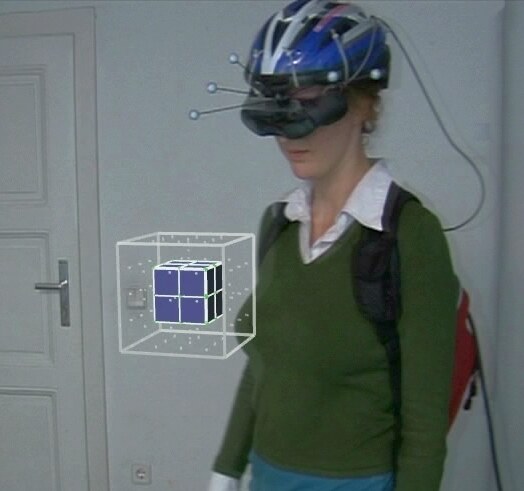Abstract
Spatial ability is a domain of intelligence that we all use in our everyday life when we navigate through an unfamiliar environment with an incomplete map, assemble a piece of furniture, or load the luggage of a family of four into the trunk of a small car. Psychological assessments of spatial ability, however, tend to measure a somewhat different skill: usually, test participants are presented with two-dimensional displays from which they are supposed to construct a three-dimensional mental representation of a figure, perform some kind of manipulation (e.g., a rotation) on that figure, and select the outcome from a number of two-dimensional pictures. The first main aim of our project was to utilize modern virtual-reality technology to present the stimulus figures of a spatial-ability test in three-dimensional space. Our participants wear a so-called head-mounted display, a goggle-type device that allows us to project pictures into their field of vision. By tracking their movements, we can adapt the pictures so that the participants have the impression that they are looking at three-dimensional figure that they can view from all sides.
A second shortcoming of classical spatial-ability tests was that they are one-shot assessments that do not take participants’ previous experiences with spatial tasks into account. Therefore, our assessment includes a pretest, a training phase, and a posttest, so that we measure potential for improvement in addition to the current status. Research has shown that the often-cited gender differences in spatial cognition are reduced (a) when stimulus figures are presented in 3D, and (b) when participants take part in a training that ameliorates the impact of previous experience.
In a first study, in which 240 university students participated, the setup was evaluated and improved and the best-functioning test items were selected. Based on participants’ strategy reports, trainings focusing on mental rotation and on memorizing complex figures were developed. In the second study, 99 students from technical and business schools took part in the complete pretest, training, and posttest sequence. There were no gender differences in performance, and the training modules eliminated the pretest differences between technical and business students. Thus, the new test setup seems to be closer to everyday challenges of our spatial abilities than previous tests were.
Funding provided by
- FWF - Österr. Wissenschaftsfonds

